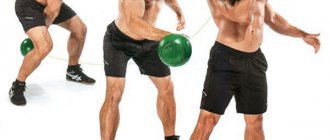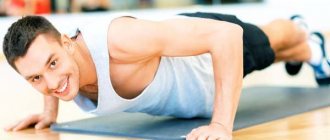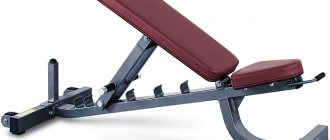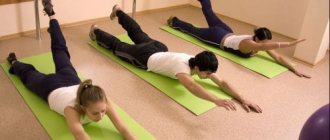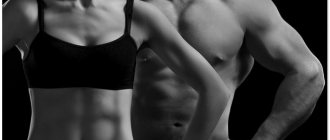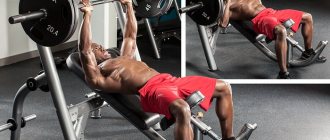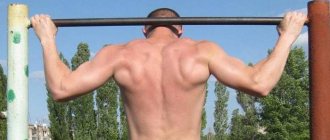You can increase muscle mass with proper nutrition, which should contain the required amount of protein, and constant training. Regular exercise will allow the muscles to get used to the load, as well as to its gradual increase. Using weights, you can cause muscle stress, which will allow you to get results in a short period of time. Let's figure out how to pump up the pectoral muscles on the horizontal bar.
Pumping up such chest muscles is not easy, but it is possible. Exercises on the horizontal bar will effectively complement a set of exercises on other apparatus and push-ups.
Features of the pectoral muscles
The pectoral muscles help the shoulder rotate your arms inward in front of you and allow you to bring them toward your body. The pecs are extremely important for distributing the load during climbing, pull-ups, or lifts. In principle, its training comes largely from stretching. This is why the barbell bench press is so good. Your elbows drop down, stretching your chest with great force. But pull-ups also have their own unique specificity.
Treatment of the middle and upper chest
If you want to have harmoniously developed pectoral muscles, we recommend adding the elements presented below to the dips.
Middle section
- Wide push-ups (3x12). We lower ourselves into a classic prone position and spread our palms wide (about 1 meter). We stretch the torso and legs in one line and fix this position. We perform smooth push-ups.
- Dumbbell fly (3x12). We lie with our backs on a bench or place two chairs without backs next to each other and use them instead of a horizontal surface. Press your feet firmly to the floor. Take two dumbbells and lift them above your collarbones. We bend our elbows slightly and, with an inhalation, smoothly spread the projectiles. At the bottom point, we pause (1-2 seconds), and then exhale and bring our hands back to the starting position.
Pumping up your chest on the horizontal bar is possible
The horizontal bar really develops the pectoral muscles very little, unlike other sports equipment.
- Firstly, it's a matter of abbreviations. For example, if you spread your arms to the sides and then close them, then the central beam works, if you lower them crosswise from top to bottom, then the top beam, and from bottom to top - bottom. It is not enough to simply raise and lower your hands. The pectoral muscles should either stretch or bring the arms toward the center. There are very few exercises on the horizontal bar that would force you to work at such an amplitude.
- Secondly, other muscles work more than the pectoral muscles in such training.
But there is still a way out.
While lifting on the horizontal bar, almost your entire body works, smoothly moving to different muscles. For example, the first jerk is carried out using the back, and then smoothly moves to the arms and shoulders, and ends with the chest. This is important to note , because for this reason we will not necessarily do full range of pull-ups. That is, if you are targeting specific development of the pectoral muscles on the horizontal bar, perform only the final contractions.
Dips
Power-ups, like pull-ups, are not ideal exercises for the pectoral muscles. If you train on outdoor equipment, we recommend doing push-ups. This element is best suited for working the lower chest. Let's look at the technique:
- We grab the edge of the bars, jump slightly and perform a handstand.
- We spread our elbows to the sides.
- We lower our chin to our collarbones, bend our knees so that our thighs are parallel to the ground and “round” our back.
- We fix this position and begin to smoothly do push-ups.
Peculiarities:
- It is advisable to perform the exercise on wide bars; on narrow bars, the triceps will be actively involved in the work;
- in the upper phase, do not straighten the elbow joints completely, otherwise the load on the chest will subside;
- We control all movements, avoid sharp jolts, swaying of the body and “throwing” the body down.
The exercise is performed for 3-4 sets of 10 repetitions each.
The last 2-3 push-ups in a set should be difficult. If this does not happen, it is necessary to increase the load with weights. For example, you can use soft weights on your legs or throw a backpack full of books over your shoulders.
Chest training program on the horizontal bar
We will work every day or three days to one, where one is rest. If you work on weekends, then every third day should be accompanied by intensive training. As mentioned earlier: the horizontal bar is not the best way to pump up the pectoral muscle, but it will help develop it comprehensively. Therefore, exercises to the maximum are perfect for overall tone.
It is recommended to do chest exercises on the horizontal bar in this order:
- Reverse grip pull-ups (10 times).
- Press from the horizontal bar (7-10 times).
- Close grip pull-ups (10 times).
- Pull-ups behind the head with a wide grip (7-10 times).
- Pull-ups with a narrow reverse grip (10 times).
Exit to two is an excellent exercise on the horizontal bar not only for the chest, but for the whole body. However, it is difficult, and not every athlete can master it. Plus, you may be physically fit but lack technique, making it difficult to perform. If you can do this exercise, then end each workout with the maximum number of repetitions. This approach will not only strengthen the muscles, but will also force the body to work under stress, which will enhance the effect of weight gain. Moreover, it is emotional preparation. In turn, pulling up behind the head in this set is more like a stretch for the muscles.
- You need to rest for about 90 seconds between sets. You can change this amount depending on your results and personal feeling of exertion, but only slightly.
- It will be enough to complete two circles.
If you don't get the burning sensation in your chest from just one pull-up bar, do a couple more sets of chest push-ups. The pace of training should be measured. You must work technically, not conveniently. Don't try to make your work easier, you're not chasing quantity. Don't forget to breathe, as if you hold your breath for a long time, your muscles will quickly become unusable due to lack of oxygen, which will stop your workout. If the load is small or, on the contrary, large, then change the number of repetitions to 2. The list shows a situational number that should be performed in full (we are talking about 7-10), but in extreme cases, reduce it to 7.
Upper body muscle anatomy
When performing exercises on the horizontal bar, the muscles of the upper body are, of course, most involved:
- biceps brachii (biceps);
- pectoralis major muscle;
- sternocleidomastoid muscle;
- coracobrachialis muscle;
- brachialis muscle;
- forearm muscle group;
- rectus abdominis muscle (abs);
- serratus anterior muscle;
- oblique external abdominal muscles;
- trapezius muscle;
- deltoid muscle group;
- triceps muscle (triceps);
- latissimus dorsi muscles;
- muscles of the thoracic region: first of all, the large external muscle and the hidden small muscle.
The main muscles affected by exercises on the horizontal bar
Exercises for relief
For body definition, a specific system is suitable, designed for 4 workouts per week. Two days of training, a break of one day and again training for two days in a row. Then you can rest for two days. Each time you need to increase the number of repetitions and approaches .
First day
- pull-ups: wide grip, wide grip behind the head;
- push-ups: on parallel bars, wide grip from the floor;
- hang: raise straight legs to the head;
- press on uneven bars.
Second day
- push-ups from the floor, medium grip, and then from the floor, feet on the bench;
- lying on your back, raising both legs at the same time;
- twisting on the horizontal bar;
- hang on the bar, raise your legs to your head.
The third day
- pull-ups: on the bar, reverse grip;
- palms to face, narrow grip.
- push-ups: on parallel bars, from the floor with a medium grip.
- hanging on the horizontal bar, raising your knees and then on the uneven bars, raising straight legs.
Fourth day
- push-ups: from the floor and from the floor, feet on the bench;
- hanging with legs raised to a right angle;
- press on the floor;
- horizontal bar: twisting.
Advantages and Disadvantages of Exercise
One of the main advantages of dips is the ability to train anywhere: in the gym, on the school playground, at home. This exercise allows you to effectively increase your bench press and strengthens your muscles and ligaments. Depending on the set-repetition scheme and the weights used, you can work out the relief and gain mass in the pectoral muscles and triceps. It is recommended for anyone who wants to gradually increase the range of motion of a joint.
The main disadvantage of the exercises is the presence of contraindications. You cannot do push-ups on parallel bars with hypertrophied pectoral muscles, as well as insufficient range of motion of the shoulder joint.
Having achieved certain success, a novice athlete must decide what is better for him to do - heavy presses or dips, since if you regularly overload the shoulder joint, you can damage its tissue. To reduce the likelihood of injury to the shoulder joint at the very beginning, it is recommended to perform the exercise in a graviton.
Technique for dips on the pectoral muscles
Push-up technique
To achieve your goals and become the owner of a slender, ripped body, without getting injured, it is important to perform the exercises technically. To do this, you must strictly follow the execution technology:
- Step onto the uneven bars and hold your body with outstretched arms.
- By bending your elbows, slowly begin to lower your body until your triceps are parallel to the floor.
- Fix for a few seconds at the lowest point and return to the starting position.
Before starting training, it is important to follow these important recommendations:
- Using dips, you can work your chest muscles and triceps. To strengthen the pectoral muscle fibers, you need to tilt your body a little forward and spread your elbows to the sides. If it is important to work the triceps, the elbows are pressed against the body.
- To reduce body sway and stabilize your core, you need to maintain tension in your buttocks and abs.
- It is preferable to go on the uneven bars from a platform or stand in the simulator. Jumping from the ground can cause injury to the shoulder joint, which can lead to serious complications.
- The head should have a neutral position during execution, that is, form a straight line from head to waist. It is not recommended to tilt it too forward or tilt it back, this will reduce the load and will inevitably lead to neck injury.
- At the top point, be sure to fixate for a few seconds, while your elbows are fully straightened. This approach will allow you to constantly maintain tension.
In some cases, you can use a false grip, this will make the manipulations more effective.
So which pull-ups are effective?
Bad news for horizontal bar followers: it is impossible to fully pump up your chest on the bar. The mechanics of movement on the horizontal bar is the tension of the biceps and latissimus dorsi. Some execution techniques additionally involve the rear or front deltoids and trapezius. In general, the essence of the exercise is to stretch your own body with the help of your arms and back, so the chest practically does not work.
The back muscles work at the moment of extension, as evidenced by all sorts of rows performed on exercise machines, but the chest is structured differently. You can force the pectoral muscles to contract and stretch (this is what pumps them up) only with the help of a bench press. This area works when pushing something away from the chest. Under the “something” there can be a barbell, dumbbells, or your own body. Therefore, the only effective method of training the chest without additional equipment is push-ups.
However, the opinion that the chest can be pumped up on the horizontal bar is not entirely wrong. You can get this area to work a little, but your pull-up technique will have to change.
So, how to do pull-ups to pump up your pectoral muscles? The algorithm is as follows.
- Place your hands on the bar so that there is a distance of no more than 15 cm between them. Grip straight; it is recommended to pre-treat your hands with talcum powder so that the bar does not slip, or use special gloves.
- Lean your body back and move your legs forward. For better balance, you can cross your ankles.
- Pull your body so that the bar is at the level of your collarbones. In the upper position, tilt your body back as much as possible and stretch your legs in the opposite direction. Then smoothly lower your body, returning to the starting position.
It will not be possible to effectively work out the chest in this way, since pulling up only uses the uppermost bundle of the pectoralis major muscle. The load is distributed to a greater extent on the biceps. If you do only this exercise, over time you can pump up impressive biceps and only slightly tighten your chest. The outlines of the chest will become more noticeable, but only in the upper part, but such an exercise will not give relief or volume.
Technical recommendations for performing pull-ups
- The main thing to remember when training on the horizontal bar is proper breathing. When you exhale, you rise, when you inhale, you lower. Exhalation and pulling are performed simultaneously.
- Do not make jerks, do everything slowly and smoothly.
- Make sure that your body does not swing from side to side when performing the exercise; pull-ups should be performed using muscle strength.
- The body must be strictly vertical relative to the horizontal bar.
- The optimal training schedule is 3 times a week for 3 sets (vary the number of pull-ups depending on your physical fitness).
- If you still find it difficult to do pull-ups, use a bench. By the way, using a bench when lowering your body will help avoid back injuries.
- Depending on the grip used: either the chest touches the bar, or the chin rises above it.
- To make the exercise have a greater effect on the pectoral muscles, alternate types of grip.
Pull-ups on the horizontal bar in combination with other exercises are a great way to pump up the pectoralis major and minor muscles. A bonus to achieving your goal is a strong back, beautiful biceps and strong arms. Therefore, the main advantage of the horizontal bar is that, by alternating different types of grip, the entire upper body is pumped and the muscles of the chest, back, abdomen and arms are strengthened.
For biceps
There is a big misconception that working out on the horizontal bar allows you to gain huge muscle mass, like bodybuilders. This is not so, the apparatus helps to form a beautiful relief and add mass, but in no way allows you to pump up biceps of the same volume as those of bodybuilders. Heavy basic exercises will help you add 3-5 cm in arm volume with regular exercise, which will make your body athletic and fit.
In a week or two, the muscles will not have time to strengthen, so you should prepare for regular exercise in order to get the coveted relief. In addition to the biceps, the process in any exercise will involve the back muscles, so the complex will simultaneously give a good load to the biceps muscle and strengthen the muscular frame of the skeleton.
Close-grip pull-ups
The position of the hands determines which group of muscle fibers will be involved in the work. For the biceps to work, the grip must be reverse or straight (it is better to combine or alternate), with the distance between the hands less than shoulder level, approximately 15-20 cm from each other. It can be combined with a parallel grip, when the palms are located at the same level as the shoulders, but not on the bar, but on the side handles, opposite each other.
In order to affect the back as little as possible and put more stress on the biceps, it is necessary to perform pull-ups correctly:
- At the beginning, it is necessary to control that the movement does not begin with pushing out with the legs, which is what beginners do. Lifting up should be done only with the help of the biceps. If this cannot be done, then a set of push-ups will help tone your arms, after which you will be able to lift your own body weight only with the strength of the biceps muscle.
- The load on the biceps does not occur during the entire pull-up, but only until reaching 90 degrees in the elbow bend. After this, the latissimus muscle is included in the process, its participation allows you to reach the bar with your chin.
- At the top point, a slight load is distributed between the back and deltoid fibers.
The main thing is not just to mechanically perform the necessary movements on the horizontal bar, but to feel your body, the load and the stages of work of each part of the muscular skeleton.
Parallel grip
It is performed on horizontal bars, where there are special crossbars that allow you to grip in such a way that your palms are opposite each other. High bars parallel to each other, located at a distance of 30-60 cm, are suitable. The starting position for pull-ups with a parallel grip with emphasis on the biceps is hanging on outstretched arms.
The upward movement should begin while inhaling, so that more oxygen is supplied at maximum load. Exhale sharply to the top point, when the chin touches the bar. When performing, you need to try to ensure that the amplitude is maximum. To do this, you need to imagine that the athlete wants to touch the crossbar not with his chin, but with his chest. There is no need to go down sharply when you reach the end point. It is better to take a deep breath, control the movement, smoothly straighten your elbows, holding your body weight with your biceps.
For triceps
Triceps is an extensor muscle that consists of three fibers, they are responsible for flexion and extension of the arm at the elbow joint. Therefore, the most effective will be those in which the maximum load falls on the elbows. They are activated with every rise and fall, when the arms are placed 20-30 cm wider than the shoulders. Therefore, to pump up the triceps, it is recommended to do these movements as slowly as possible. However, there are also certain exercises that utilize the triceps muscle to a greater extent.
Lateral pull-ups
For this type of pull-up, you will need the edge of a horizontal bar or a fairly wide apparatus. The athlete places his hands one in front of the other without any gap between them, the body position is parallel to the crossbar. The lift is carried out until the arms are fully bent at the elbow joint, moving the head away from the crossbar, alternately in each direction. You need to lower yourself slowly until your arm is fully extended. On each approach, it is necessary to change the position of the hands so that the one that was in front moves back, and vice versa.
Power output
This horizontal bar exercise involves lifting your entire body over the bar, up to waist level. For beginners, it is better to first master simpler types of pull-ups, and only when they do not cause difficulties can you begin to perform power exercises. It is recommended to start doing it with one hand, alternating. And only after complete power output on one arm can be achieved without problems, you can begin to pull yourself up and push the body with both hands.
The technique for performing this exercise is very complex:
- Hand placement. Making a forceful exit is only possible if the wrists are positioned above the level of the bar when gripping. If the condition is not met, then nothing will work except high pull-ups. Beginners should pay special attention to the positioning of their hands; if they cannot make a forceful exit, in most cases failures occur precisely because of the low position of the wrist. The hands should be in a position from which they can easily rotate under the influence of a small impulse.
- Pull-ups to the chest. To perform the exercise, you need to learn how to pull yourself up to your chest, that is, reach the crossbar with your chest.
- Belly touch. The next step is to pull up above your chest until your stomach touches the bar. If you lack strength, you can use a push with your legs or your whole body.
Beginners are recommended to do this with only one hand. After pulling up to the level of the chin, one palm needs to be rotated so that it is positioned with the wrist above the crossbar and becomes a supporting one. After this, you need to try to lift the body weight with one hand first, while helping to hold it with the other. After straightening one arm, do the same with the one that helped.
Correct breathing
Exercises for the chest and other muscles on the horizontal bar and uneven bars become a dangerous activity if done incorrectly. A typical mistake for beginners is throwing their head back with a jerky movement, or excessively lifting their chin. The main movement of most practitioners is done while inhaling, and the shoulders are brought down to the chest. Such implementation often leads to severe injury to the cervical vertebrae; due to improper implementation, intervertebral hernias are possible.
Alexander Shestov
TRX Certified Trainer
Ask a Question
The technique for performing any exercise must be safe.
The correct technique implies mandatory filling of the chest with air when lifting, with a slight breath-hold at this moment; this technique will save you from straining small muscles. If performed correctly, there will be no severe pain in the upper body.
When pulling up, do not squirm your body. The main task of exercises on the bar is to work the back and chest, so repetitions performed at any cost are not needed here. If the amplitude is excessive, pull-ups must be performed with a counterweight. Strictly vertical ascents and descents are realized through the movement of the elbows.
Benefits of exercise
For maximum benefit, it is worth remembering the basic rules for performing exercises:
- Raising the torso should be carried out without inertia and swaying, solely by muscle strength.
- Work should be smooth, jerking is not allowed.
- The chin should be over the bar only at the top of the lift.
- It is necessary to lower the body down smoothly, and the ascent and descent must be equal in duration.
- Correct breathing involves exhaling on the way up and inhaling on the way down.
- You must grasp the crossbar confidently.
- The position of the body is strictly vertical.
Important! General rules apply to each type of pull-up, but working out individual exercises has its own nuances.
